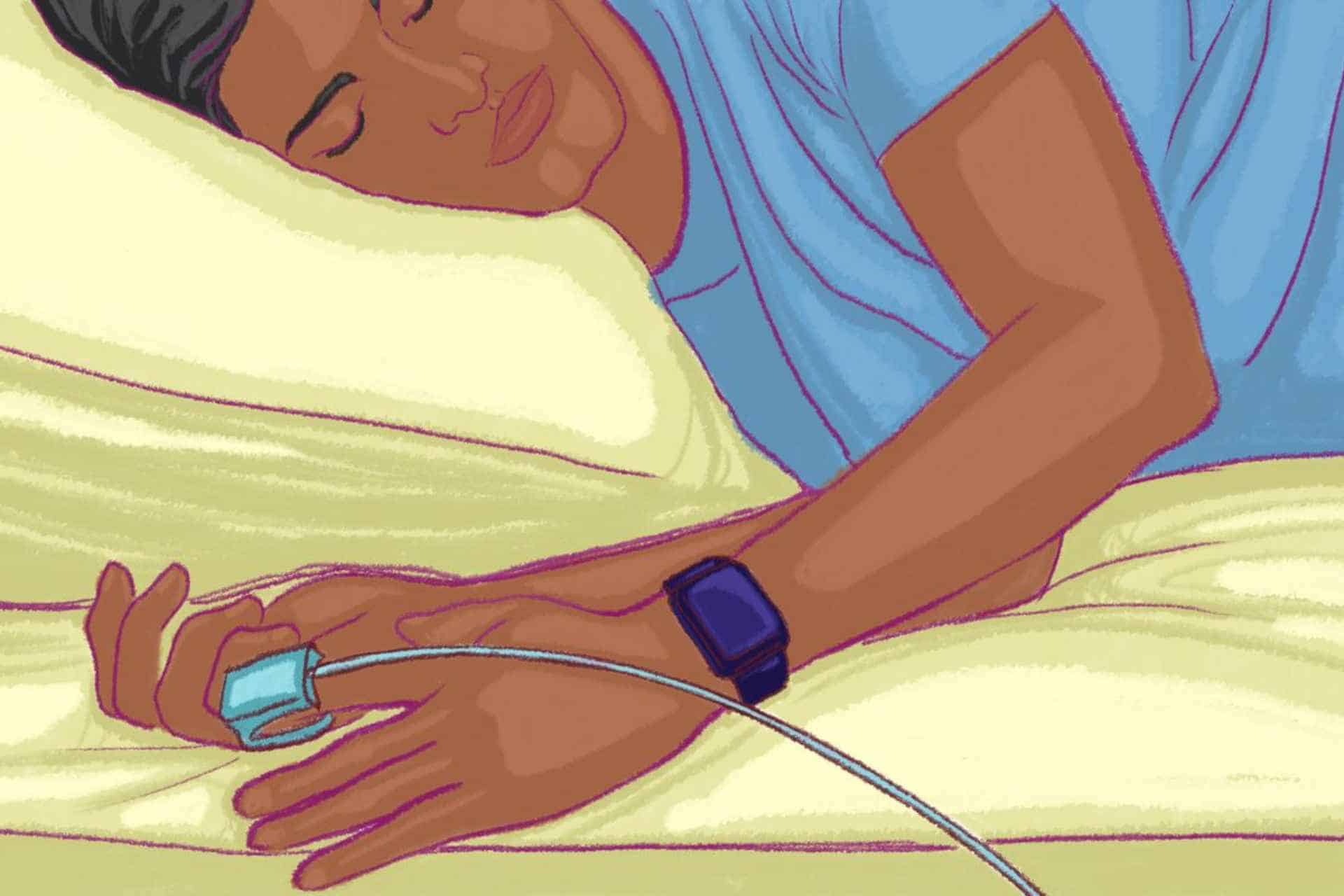MORGANTOWN — Researchers at West Virginia University are developing a sleep apnea detection device that patients can use at home, thanks to a grant from the National Science Foundation.
Dr. Sunil Sharma, N. Leroy Lapp Professor and division chief of the Pulmonary, Critical Care and Sleep Medicine Fellowship Program at WVU’s School of Medicine, received the award. He has been working with other WVU researchers to develop prototypes and secure a patent for the device.
“It’s about taking technology from the lab to the bedside,” Sharma said. “This grant will help us connect with people who have a high level of expertise and join their strengths with ours. We will work with experts in AI, software production and enhancement, industrial production, and technology and hardware enhancement.”
The NSF Innovation Corps program will support collaboration among experts from WVU and other institutions.
The prototypes, a watch and a fingertip clip similar to a pulse oximeter, use artificial intelligence to measure and analyze data collected via an app on a smartphone or tablet. Patients wear the device while sleeping at home.
“What the devices do is collect information from your bloodstream regarding the certain way the oxygen is delivered and circulated in the blood,” Sharma explained. “Based on those oxygen signals and the algorithms which we have fed in — the way we designed it and calibrated it — they can accurately reflect what may be happening in the body without having to go through very expensive testing.”
The device not only detects sleep apnea but also gauges the severity of the disorder, indicating whether patients need continuous positive airway pressure (CPAP) treatment or simple lifestyle changes.
Obstructive sleep apnea (OSA) is a condition where the airways partially or completely collapse, reducing oxygen levels. Symptoms include loud snoring and excessive daytime sleepiness, though many people are asymptomatic. About 80% of OSA cases worldwide are undiagnosed.
“A delayed diagnosis can lead to worsening of underlying comorbid conditions such as heart failure, stroke and atrial fibrillation because OSA acts like a fuel to other diseases,” Sharma said.
The device’s development follows a five-year study at WVU Medicine J.W. Ruby Memorial Hospital. Sharma and his colleagues screened patients hospitalized for general medical and heart failure conditions to determine the need for further OSA testing.
Patients diagnosed with OSA were prescribed positive airway pressure (PAP) therapy and instructed to use it for a minimum of four hours nightly, 70% of the time. Over six months, researchers found that patients who did not adhere to PAP therapy had higher hospital readmissions and emergency room visits for cardiovascular and pulmonary issues compared to those who followed the therapy.
“The above data complimented by similar findings at other institutions strongly suggest that if we catch OSA earlier, the treatment may facilitate in the control of their comorbid conditions,” Sharma said.
The study, published in the Journal of Clinical Sleep Medicine, also analyzed health care spending and hospital resources. Early detection and treatment led to lower costs for patients and health care facilities, with fewer hospitalizations freeing up beds for other patients.
Factors contributing to the disorder going undetected include the unavailability of sleep physicians and sleep lab testing facilities, low awareness, and associated costs.
“Sleep labs are so booked that sometimes it takes weeks to months to get an appointment. In that amount of time, they’re possibly seeing readmission to the hospital and a significant escalation of their condition,” Sharma noted.
At-home testing appeals to patients reluctant to spend the night in an unfamiliar setting, which can affect sleep quality.
The devices could benefit people in rural areas, who might face long trips to testing sites or rely on family members for transportation.
Sharma hopes the study raises awareness that early detection of OSA can improve outcomes for patients with comorbid diseases and prevent others from developing more serious conditions.
“We are just learning more and more about this disease, how it drives other conditions and how patients can be very asymptomatic and yet have the disease still going on in their system,” he said. “We do know we can’t treat it if we can’t detect it.”

















